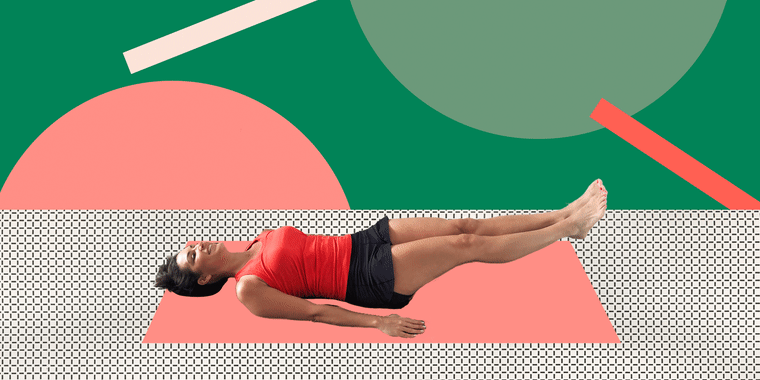Leg lifts or leg raises work the core as well as the hips and low back, making them a great move to master for improved overall strength. While situps and crunches work the abs, they don’t recruit other stabilizing muscles like leg lifts do.
If leg lifts work the core more thoroughly than situps and crunches, why are they performed less frequently? Leg lifts are more challenging than the well-known sit up, making them less attainable of a move. Because of this, leg lifts are a nice progression when you’ve been working on more basic ab exercises for some time.
If you want to start incorporating them into your core routine, proper form is key. Here’s how to perform the move — and build up the strength necessary to do it correctly.
What do leg lifts do for the body?
Leg lifts work your core for better stabilization and balance, which leads to better overall control of your body. Leg lifts work the lower abs, but they also work the inner thighs (which in Pilates, are considered part of the core). Studies show that having a stable core is essential in preventing injury.
Besides working the lower abs and inner thighs, leg lifts also help with hip strength and flexibility due to the motion of your legs and hips during the move. Plus, the move gets your low back involved, which is beneficial for anyone who is interested in strengthening the full core region.
The common mistakes people make when doing leg lifts
Because leg lifts do get your back involved, arching of the low back can become a major problem. I often find my clients arching their back too much when performing the leg raise. Not only does this take away from the main purpose of the leg raise — working the core — but it also can cause injury.
Additionally, the speed of the leg lift is somewhat of an issue for some of my clients. While moving your legs up in the air at a faster speed may make the move feel easier, it also makes it less effective. To avoid these common mistakes, keep these tips in mind:
- Don’t arch your back. Keep your hands at your sides, not underneath your butt, to avoid this.
- Don’t flex your neck. Make sure you keep your head on the ground throughout the move and keep the shoulders relaxed.
- Move slowly, making sure you’re using your abs to raise your legs into the air, not momentum.
How to do a modified leg lift
Leg lifts can be modified for all skill levels while keeping the basic movement the same. Because the hard part of the leg lift comes when holding your feet just above the ground, modified leg lifts allow you to hold with your legs higher above the ground or even with slightly bent knees.
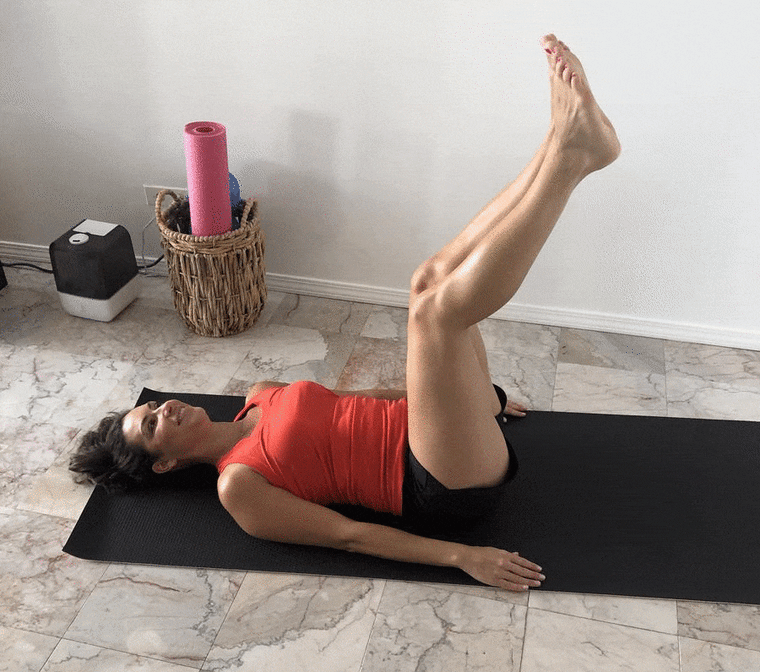
Begin by lying on your back with your feet straight out in front of you and your arms to your sides. When lifting your legs above the ground, try bending slightly at the knees to make the move easier. When lowering your legs down, hold them at a further distance off the ground instead of hovering them above the floor.
How to perform leg lifts correctly
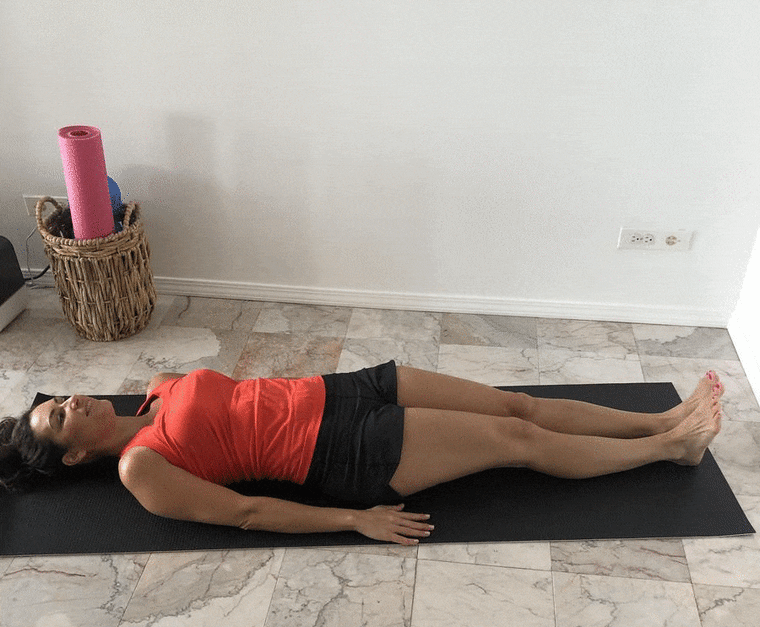
- Lie on the floor with your arms at your sides and your legs straight out in front of you.
- Make sure to keep your low back on the ground as you pull your naval in towards the spine and squeeze your legs together.
- With your legs straight and together, lift into the air so that your body creates an L shape.
- Slowly lower your legs toward the mat without arching your back.
- Once your feet are hovering above the ground, hold for a few seconds before returning to the first step.
4 exercises that will help you build up the strength to perform leg lifts
Without a strong core, leg lifts may feel extra challenging. However, once you acknowledge your areas of weakness and work on strengthening your abdominal region, you’ll be able to feel confident performing the move. These other exercises will help you build that strength.
Single leg lift
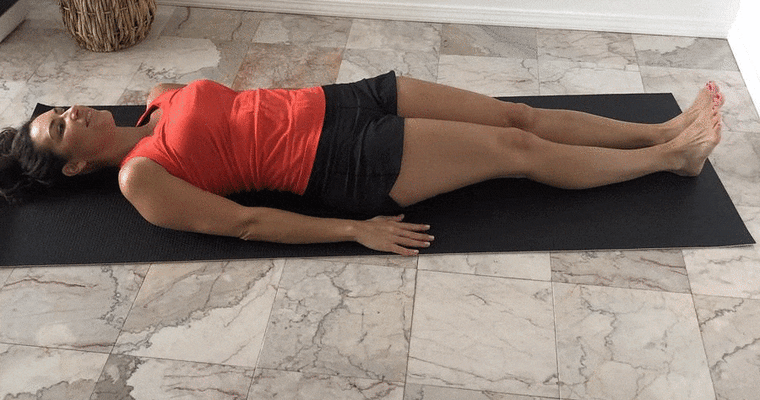
Begin in the same starting position as the traditional leg lift. Instead of lifting both legs, lift only one while keeping the other on the ground. Slowly lower your leg until your foot is hovering over the mat. Hold for 3 seconds, then perform on the other side. Continue alternating.
Boat

Sit on the floor with your knees bent so that your feet are on the mat. Lean your upper body back slightly while keeping your spine straight until you feel your core engage. Lift your feet off the mat, keeping your legs together. Hold your arms straight out in front of you and straighten your legs toward the sky, forming a V shape with your body. Hold for 5-10 seconds.
Wall sit
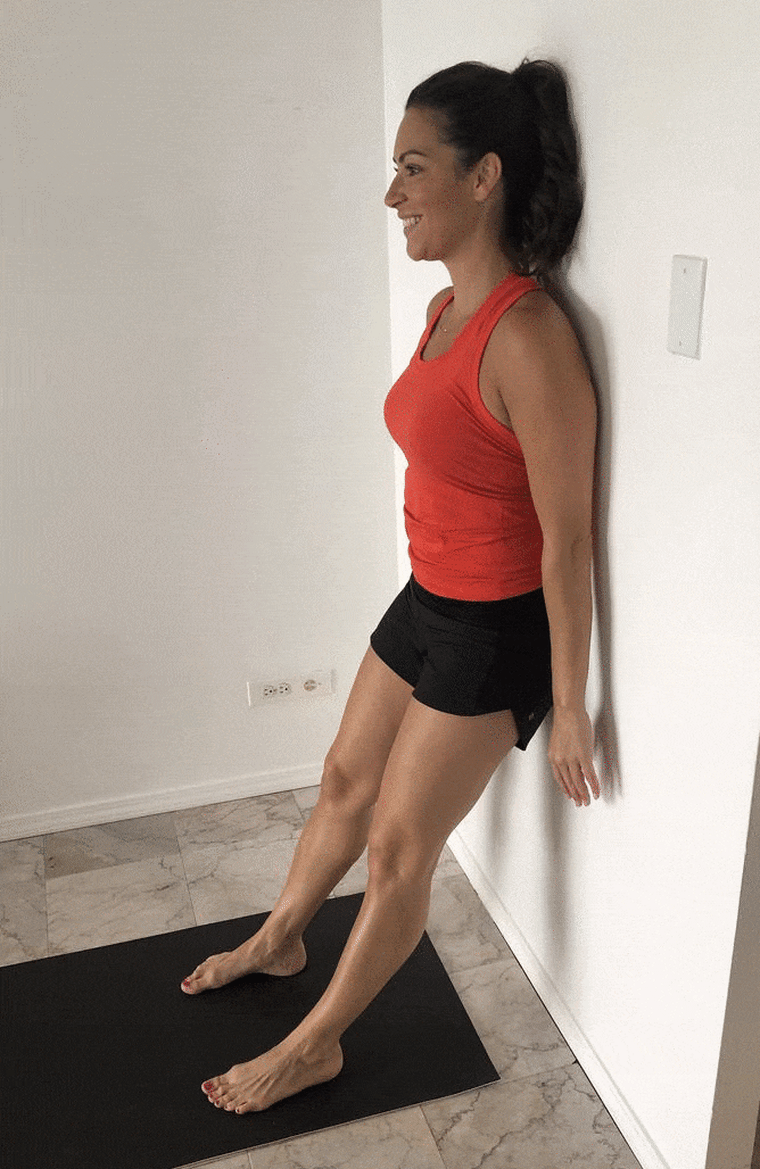
Stand with your back against a wall. Bend your knees, sliding down the wall so that your thighs are parallel to the ground. Make sure your feet are far enough away from the wall that your knees are over your ankles and not further. Hold this position for 20 seconds, using your abs to stabilize your body. Hold your arms out in front of you, or keep them straight down at your sides.
Flutter kicks
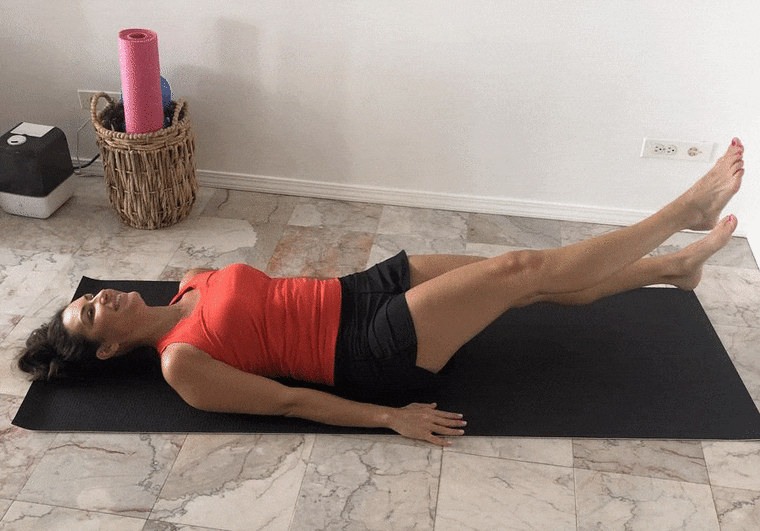
In the same starting position as the leg lift, begin fluttering your legs up and down as they hover above the ground. Remember not to arch your back or lift your neck off the ground. If your back begins to arch, raise your legs up further from the ground or bend at the knee. Perform the scissor kick motion for 20 seconds.
